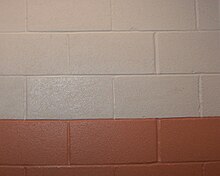Naming and Composition
– Concrete blocks are known as cinder blocks in the United States.
– In the United States, breeze blocks refer to decorative blocks used on exterior walls.
– In Australia, they are often called besser blocks or grey blocks.
– Clinker blocks use clinker as an aggregate material.
– Breeze blocks were an important feature of Mid-Century Modern design.
– Concrete blocks are made from cast concrete, typically using portland cement and aggregate.
– Porous lava rock gravels are used in the western United States for weight reduction.
– Industrial wastes like fly ash or bottom ash can be used as aggregates in lower-density blocks.
– Recycled materials such as post-consumer glass or slag cement are often used in block composition.
– Autoclaved aerated concrete and expanded clay aggregate can be used to produce lightweight blocks.
Sizes and Structure
– Concrete blocks come in modular sizes, including 4-inch, 6-inch, 8-inch, and 12-inch thicknesses.
– In the US, concrete blocks are nominally 16 inches long and 8 inches wide.
– In Ireland and the UK, blocks are usually 440mm × 215mm × 100mm.
– In Australia, New Zealand, and Canada, blocks are usually 390mm × 190mm × 190mm.
– Block cores are tapered to allow for mortar bed and steel reinforcement insertion.
Uses
– Concrete blocks are commonly used as load-bearing walls in buildings.
– They are also used for crawl space foundations in American suburban houses.
– Retaining walls can be constructed using concrete blocks.
– Concrete block walls are used as fire-rated and durable partition walls in schools.
– They are also used as exterior backup curtain walls for building envelope systems.
Properties and Strength
– Concrete masonry walls can be ungrouted, partially grouted, or fully grouted.
– Steel reinforcement bars can be used vertically and horizontally in concrete block walls.
– Grouting is necessary for the bars to bond to the wall.
– High-seismic zones typically require fully grouted walls.
– The American design code for using concrete blocks as a structural system is TMS 402/ACI 530/ASCE 5.
– Compressive Strength of Masonry (Portland Cement Organization)
– Comprehensive Strength of Hollow Concrete Blockwork (Government of Canada)
– Properties of Concrete Blocks — Strength
Additional Resources
– Solution to Gaza’s rebuilding problems (The Independent)
– Green Cake as a phoenix rising from Gaza’s ashes (Middle East Eye)
– Block Making Machine aggregate example (Web Editor)
– Masonry & LEED v4 (Echelon Masonry)
– EPS Insulation and its applications (Universal Foam Products)
– Masonry Design and Detailing for Architects, Engineers and Builders by Christine Beall
– Wikimedia Commons has media related to Concrete blocks Source: https://en.wikipedia.org/wiki/Concrete_block
A concrete block, also known as a cinder block in North American English, breeze block in British English, concrete masonry unit (CMU), or by various other terms, is a standard-size rectangular block used in building construction. The use of blockwork allows structures to be built in the traditional masonry style with layers (or courses) of staggered blocks.




Concrete blocks may be produced with hollow centers (cores) to reduce weight, improve insulation and provide an interconnected void into which concrete can be poured to solidify the entire wall after it is built.
Concrete blocks are some of the most versatile building products available because of the wide variety of appearances that can be achieved using them.
